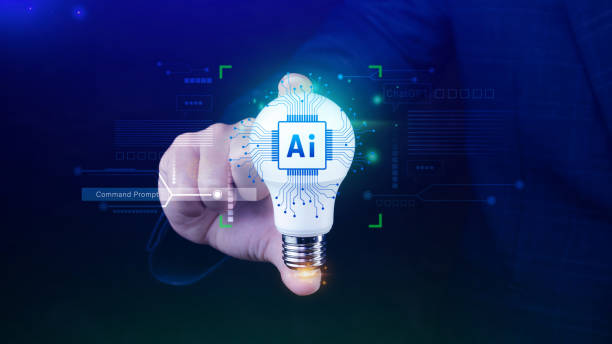Introduction to On-Page Website Optimization
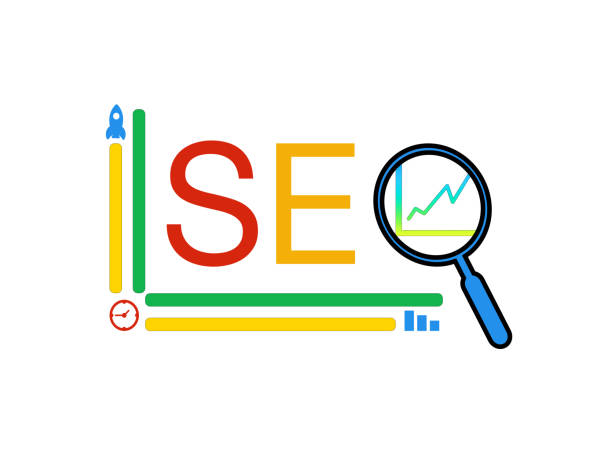
Today, in the competitive world of the web, a strong presence in search results is vital.
One of the fundamental pillars for achieving this goal is #On_page_SEO or #On_Page_Optimization.
This part of website optimization includes all activities performed within your website to improve its ranking in search engines and attract more #organic_traffic.
Unlike off-page SEO, which deals with backlinks and domain authority from external sources, on-page SEO is entirely within your control, and thus, it is considered a powerful starting point for any SEO strategy.
These activities include content optimization, technical site structure, and user experience.
In fact, search engines like Google are constantly striving to display the most relevant and highest quality content to users, and on-page SEO helps them better understand your content and recognize its value.
Did you know that even the smallest changes in on-page SEO can have significant impacts on your ranking? This explanatory aspect of SEO not only helps you make your site more friendly for complex search engine algorithms but also provides a better experience for visitors.
This educational approach introduces you to fundamental concepts and highlights the importance of synergy between content and technical site structure.
Do you dream of a thriving online store but don’t know where to start?
Rasaweb is your comprehensive e-commerce website design solution.
✅ Attractive and user-friendly design
✅ Increased sales and revenue⚡ Get a free consultation
Key and Important Elements in On-Page SEO

For a web page to shine in search results, special attention must be paid to a set of #key on-page SEO elements.
The first and perhaps most important element is the #Title_Tag, which directly tells search engines and users what the page content is about.
Using primary keywords in the title doubles its appeal.
After that, the #Meta_Description is placed, which, although not directly impacting ranking, can increase the click-through rate (CTR) and encourage users to enter your site.
Don’t forget that meta descriptions should be engaging and persuasive.
Structured use of Heading Tags (H1-H6) is also vital for content organization and improving its readability.
H1 is typically used for the main page title, and other tags are used for subheadings.
This hierarchy helps search engines better understand the structure and main topics of your content.
On-page SEO aims to optimize internal elements to attract more traffic.
Additionally, URL Optimization, using relevant keywords and a short, readable structure, is another specialized aspect.
Did you know that simple and descriptive URLs are more appealing to both users and search bots? These elements together create a strong foundation for on-page SEO success and show search engines how relevant and valuable your content is.
Content Optimization and Keyword Placement
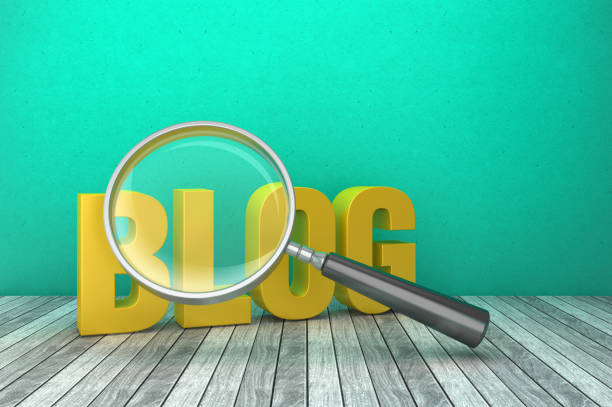
Content is king; this statement holds especially true in the world of SEO, particularly concerning on-page SEO.
Producing #high-quality_content relevant to user needs is the backbone of any successful SEO strategy.
But quality alone is not enough; appropriate keywords must also be correctly placed within the content.
Intelligent keyword placement does not mean stuffing the text with keywords (which is called Keyword Stuffing and is harmful), but rather using them naturally and spread throughout the text.
#Keyword_density should be optimal, and keywords should be included in strategic places such as the title, introduction, and conclusion.
This analytical approach helps you write content that is both engaging for users and understandable for search engines.
One guiding method for improving #content_relevance is the use of LSI (Latent Semantic Indexing) keywords.
These words are synonyms or related terms to your main keywords and show search engines how comprehensive and in-depth your content is.
For example, if your main keyword is “diet,” LSI keywords could include “weight loss,“ “healthy nutrition,“ or “meal plan.“
On-page SEO requires a balance between user desires and search engine algorithms.
This not only increases the quality of your content but also helps search engines correctly understand the main topic of your content and display it to the target audience.
| Placement Location | Description | Importance for On-Page SEO |
|---|---|---|
| Title Tag | Includes main keyword and click appeal | Very High |
| Meta Description | Includes keyword, descriptive, and persuasive | Medium (for CTR) |
| H1 to H6 | Used in main title and subheadings for structuring | High |
| First Paragraph | Includes main keyword to introduce topic | High |
| Throughout the text (various sections) | Natural distribution of keywords and LSI | High |
| Image Alt Tags | Image description with relevant keywords | Medium |
Technical Aspects of On-Page SEO and Its Impact

In addition to content, the technical aspect of your website plays a crucial role in the success of on-page SEO.
Page Speed is one of the most important factors, affecting both user experience (UX) and ranking.
Today’s users are impatient, and if your site is slow, they will quickly leave it.
Low #site_speed can increase the Bounce Rate and send a negative signal to search engines.
Using image compression, caching, and code optimization are among the specialized methods for improving speed.
#Mobile_Friendliness is also a vital factor, as a significant portion of searches are conducted via mobile devices.
A responsive website that works well on various screen sizes is essential for on-page SEO.
Did you know that Google first checks the mobile version of your site for indexing? This has been a significant news change in recent years.
A clear and hierarchical #URL_structure is also an important technical aspect.
URLs that are short, descriptive, and contain keywords are more understandable for both users and search engines.
Furthermore, correct use of the Canonical Tag to prevent duplicate content issues, and the use of an XML Sitemap to help search engines discover all your pages, are other essential actions in on-page SEO.
These technical aspects help search engines crawl and index your website in the best possible way, which in turn leads to improved rankings.
Do you have an e-commerce site, but your sales aren’t as expected? Rasaweb solves your problem forever with professional e-commerce website design!
✅ Significant increase in conversion rates and sales
✅ Unparalleled user experience for your customers
⚡ Click to get a free consultation with Rasaweb!
User Experience and Its Role in On-Page SEO
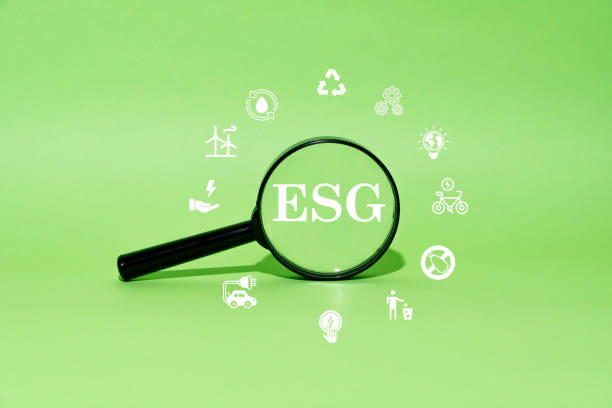
Search engines, especially Google, are getting smarter every day and place more importance on #user_experience (UX).
A site with poor user experience, even if it has excellent content, may struggle in rankings.
#UX means how easily and pleasantly users can interact with your site.
Factors such as attractive visual design, easy navigation, content readability, and the absence of intrusive pop-ups all play a role in improving user experience and, consequently, on-page SEO.
Sites where users spend more time, view more pages, and have a low bounce rate send stronger positive signals to search engines.
An analytical approach shows that increased time spent on site and reduced bounce rate directly contribute to site ranking.
A guide to improving UX is ensuring site compatibility with all devices and browsers.
Additionally, reviewing user feedback and conducting usability tests can help identify site strengths and weaknesses.
This educational aspect emphasizes that on-page SEO is no longer limited to keywords but is increasingly moving towards how useful and pleasant your site is for humans.
Search engines want to provide the best experience for their users, and if your site meets this need, it will be rewarded in search results.
This is a win-win game that serves both users and your SEO goals.
Monitoring and Analyzing On-Page Optimization Performance
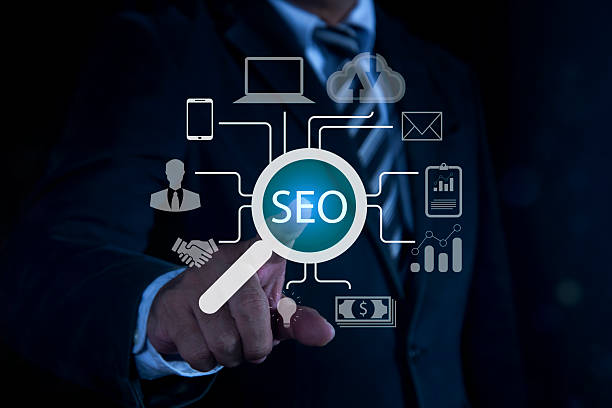
Implementing on-page SEO strategies is only half the journey; continuous monitoring and performance analysis is the other crucial part that ensures your success.
Tools like Google Analytics and #Google_Search_Console provide invaluable information about how users interact with your site and its performance in search results.
Google Analytics helps you monitor site traffic, traffic sources, user dwell time, popular pages, and conversion rates.
These data provide deep analytical insights into user behavior.
On the other hand, Google Search Console allows you to view your site’s performance in search results, including the keywords users used to find your site, click-through rates, and any technical issues that might have been identified by Google.
Did you know that using these tools, you can identify and fix indexing issues or crawl errors? This information is vital for continuous on-page SEO improvement.
Regularly reviewing this data helps you identify the strengths and weaknesses of your SEO strategy and make data-driven decisions for further optimization.
This is a continuous process that allows you to keep pace with changes in Google’s algorithms and user behavior, always maintaining your site’s on-page SEO in the best condition.
Advanced Strategies for On-Page SEO

After implementing the basic principles, it’s time for #advanced_on-page_SEO strategies that can distinguish your website from competitors.
One such strategy is the use of #Schema_Markup.
Schema is a semantic code that helps search engines better understand your site’s content and display it as Rich Snippets in search results, such as star ratings for products or business opening hours.
This is a specialized explanation of how structured data works.
This not only helps your ranking but also significantly increases the click-through rate.
#Image_optimization also goes beyond using the Alt tag.
Optimizing image file sizes for better loading speed, choosing appropriate formats (like WebP), and using descriptive file naming that includes keywords all contribute to improving on-page SEO.
Did you know that optimized images can drive a lot of traffic to your site from Google Image Search?
Another important strategy is #Internal_Linking.
This means connecting related pages of your website to each other using appropriate anchor texts.
Internal linking not only helps users navigate your site more easily but also distributes Page Authority throughout the site and assists search engines in discovering and indexing new pages.
This is a guiding approach that enhances your pages’ power and strengthens your site’s structure.
On-page SEO can maximize its power using these techniques.
| Strategy | Description | Impact on On-Page SEO |
|---|---|---|
| Schema Markup | Adding semantic codes for better search engine understanding | Increased CTR and visibility in search results |
| Image Optimization | Compression, appropriate format, Alt tag, and descriptive naming | Increased site speed and traffic from image search |
| Internal Linking | Connecting related pages with appropriate anchor texts | Page authority distribution, improved user navigation, better crawling |
| Old Content Cleanup | Removing or updating outdated or low-quality content | Improved overall site quality, better ranking for main pages |
| Mobile Speed Optimization | Special optimization for mobile users (e.g., AMP) | Essential for mobile ranking and user experience |
Common Mistakes in On-Page Optimization and Avoidance Strategies
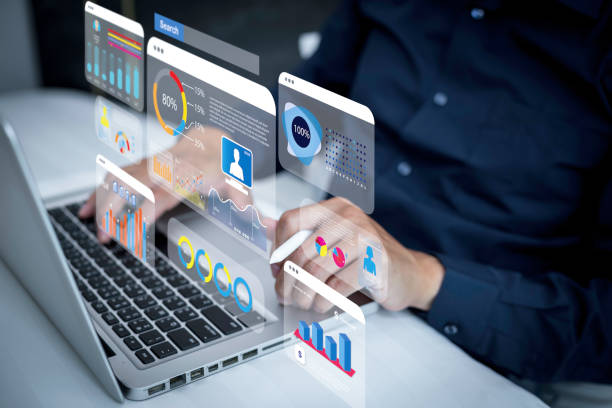
Despite the importance of on-page SEO, common mistakes can render your efforts fruitless.
One of these mistakes is #Keyword_Cannibalization.
This occurs when multiple pages on your site are targeting a similar keyword, leading to search engine confusion and your pages competing with each other.
The solution is for each page to target only one primary keyword, and for related keywords, to link to more comprehensive content or other pages.
This is a questionable content issue that is often overlooked.
#Duplicate_Content is also a serious problem.
If identical content exists on multiple different URLs on your site, Google won’t know which page to rank.
Using canonical tags or 301 redirects is essential to solve this problem.
Ignoring site speed and lack of mobile compatibility, as previously mentioned, are big mistakes that can harm your ranking.
Another mistake is the presence of #Broken_Links.
Broken links not only disrupt user experience but also signal to search engines that your site is not well maintained.
Regular site auditing with tools like Ahrefs or free tools to find and fix broken links is vital.
This explanatory section on common problems helps you prevent ranking drops due to simple mistakes and keep your site’s on-page SEO on the right track.
Does losing customers who visited your site to buy bother you?
Rasaweb is your specialized solution for having a successful online store.
✅ Significant increase in your online sales
✅ Building trust and professional branding with customers⚡ Get a free consultation from Rasaweb experts!
Future of On-Page SEO and New Trends

The world of SEO is constantly evolving, and on-page SEO is no exception.
While basic principles remain constant, new trends emerge that need attention.
One of the most important future trends is #Voice_Search.
With the increasing use of voice assistants like Siri and Alexa, optimizing content to answer conversational and longer queries has gained increasing importance.
This analytical approach makes you think about how to change your content strategy.
The role of #Artificial_Intelligence (AI) in search engine algorithms is also growing.
Google uses AI to better understand user intent and provide more accurate results.
This means your content should not only be optimized for specific keywords but also be comprehensive, relevant, and answer users’ hidden questions.
#User-Centric_Experience, including Core Web Vitals and other page quality metrics, will continue to be a central focus.
Search engines are increasingly relying on these signals to determine which sites offer the best user experience.
This is a news look at future trends.
On-page SEO will increasingly focus on quality, relevance, and user experience.
Websites that can keep pace with these changes and provide rich content and an unparalleled experience will remain at the top of search results in the future.
These entertaining, yet serious, predictions should make you think and prepare your strategies for the future.
Summary and Practical Steps for Successful On-Page SEO
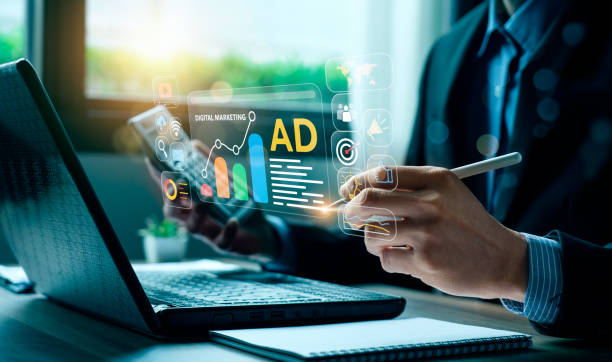
Ultimately, success in on-page SEO does not happen overnight; it is a #continuous_SEO_planning and #continuous_execution that requires patience and precision.
By focusing on fundamental principles such as title and meta optimization, producing high-quality and comprehensive content, improving technical aspects of the site like speed and mobile compatibility, and also paying attention to user experience, you can strengthen the foundations of your on-page SEO.
#Continuous_improvement and data analysis through tools like Google Analytics and Search Console help you always stay on the right track and keep pace with algorithm changes and new SEO trends.
Practical steps to start or improve your on-page SEO include: First, conduct comprehensive #keyword_research.
Then, optimize your existing content based on these keywords, focusing on quality and comprehensiveness.
After that, technically review your site and resolve any issues related to speed, mobile-friendliness, or URL structure.
Finally, regularly monitor your site’s performance and adjust your strategies based on the collected data.
This is a practical and educational guide.
Remember, the ultimate goal of on-page SEO is not just to achieve high rankings but to provide the best possible user experience and meet their needs.
The more useful and likable your site is for users, the more search engines will like it.
By following these tips, you can significantly increase your site’s organic traffic and solidify your position in today’s competitive online world.
Frequently Asked Questions
| Question | Answer |
|---|---|
| What is On-page SEO? | On-page SEO refers to a set of actions performed within a website and on page content to achieve a better ranking in search results. |
| Why is On-page SEO important for a website? | On-page SEO helps search engines better understand your page’s content and assess its importance. It also provides a better user experience for visitors. |
| What are the most important factors in On-page SEO? | The most important factors include keyword optimization, content quality, Title Tag, Meta Description, URL structure, Heading tags (H1-H6), internal linking, and image optimization. |
| What role does the Title Tag play in On-page SEO? | The Title Tag is one of the most important on-page SEO factors that displays your page’s title in search results and browser tabs. It should include the main keyword and be engaging. |
| What is the importance of Meta Description in On-page SEO? | The Meta Description provides a summary of the page’s content, and although it does not directly affect ranking, it can increase the click-through rate (CTR) by encouraging users to click. |
| How are keywords used in On-page SEO? | Keywords are phrases that users use to search for information in search engines. Proper and natural use of them in content helps the search engine identify the page’s topic. |
| What is internal linking and what is its benefit in On-page SEO? | Internal linking means creating links between different pages of a website. This helps distribute page authority, assists search engine bots in crawling, and improves user experience. |
| How does image optimization affect On-page SEO? | Image optimization includes compressing size, using appropriate Alt tags, and proper file naming. This improves page loading speed and helps search engines understand image content. |
| What does high-quality content mean in On-page SEO? | High-quality content means content that is comprehensive, accurate, unique, up-to-date, and user-friendly, and meets user needs. |
| What role does URL structure play in On-page SEO? | Readable, short, and keyword-rich URLs help search engines and users better understand the page’s content and improve user experience. |
And other advertising services of Rasaweb Advertising Agency
Smart UI/UX: A creative platform for improving SEO ranking by customizing user experience.
Smart Advertorials: A creative platform for improving campaign management with custom programming.
Smart Direct Marketing: A creative platform for improving online growth with intelligent data analysis.
Smart Custom Software: Professional optimization for increasing website visits using Google Ads management.
Smart Advertorials: A creative platform for improving customer acquisition with Google Ads management.
And over hundreds of other services in the field of internet advertising, advertising consulting, and organizational solutions
Internet Advertising | Advertising Strategy | Advertorials
Sources
Comprehensive SEO GuideOn-Page SEO TutorialIncrease Organic TrafficPractical SEO Tips
?With Rasaweb Afarin, your business shines at its peak! With our expertise in personal website design and a wide range of digital marketing services, we create a powerful and impactful online presence for you.
📍 Tehran, Mirdamad Street, next to Bank Markazi, Southern Kazeroon Alley, Ramin Alley, No. 6



